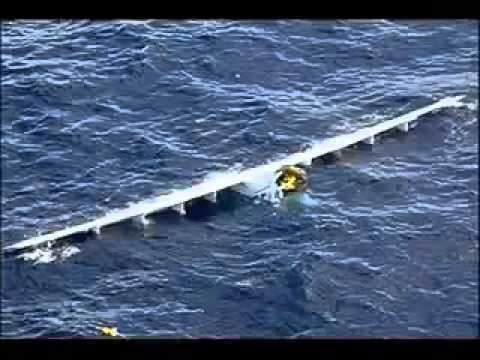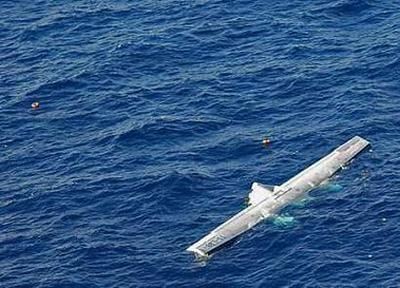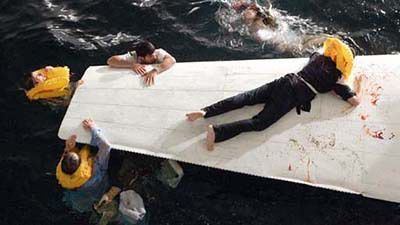Passengers 35 Survivors 23 Date 6 August 2005 Operator Tunisair Express Passenger count 35 | Fatalities 16 Number of deaths 16 Survivor 23 Crew count 4 | |
 | ||
Summary Ditching, fuel starvation due to maintenance error and pilot Error Similar Chalk's Ocean Airways F, Partnair Flight 394, TANS Perú Flight 204, West Caribbean Airways F, Eastwind Airlines Flight 517 | ||
Black box of the tuninter flight 1153 eng and french sub
Tuninter Flight 1153 (UG1153/TUX1153) was a Tuninter Airlines international flight from Bari International Airport in Bari, Italy, to Djerba-Zarzis Airport in Djerba, Tunisia. On 6 August 2005, the Tuninter ATR-72 ditched into the Mediterranean Sea about 18 miles (29 km) from the city of Palermo. Sixteen of the 39 people on board died. The accident resulted from engine fuel exhaustion due to the installation of fuel quantity indicators designed for the ATR 42, in the larger ATR 72. It was also Tuninter's first fatal accident in the 14-year history of the company.
Contents
- Black box of the tuninter flight 1153 eng and french sub
- Air crash investigation tuninter flight 1153 ditch the plane falling s07e06 hd documentary
- History
- Passengers
- Investigation
- Aftermath
- Criminal conviction
- Controversy
- Dramatization
- References

Air crash investigation tuninter flight 1153 ditch the plane falling s07e06 hd documentary
History

The flight was under the command of 45-year-old Captain Chafik Al Gharbi (شفيق الغربي), a skilled and experienced pilot with a total of 7,182 flight hours. The co-pilot, 28-year-old Ali Kebaier Al-Aswad (علي كبيّر الأسود), had logged 2,431 flight hours. Both the captain and co-pilot were well-acquainted with the ATR 72, having accrued 5,582 hours and 2,130 hours in it, respectively.

The aircraft, an ATR 72–202, had its fuel quantity indicator (FQI) replaced the night before the flight, but technicians inadvertently installed a FQI designed for the ATR 42, a similar but smaller airplane with smaller fuel tanks. Ground crews and the flight engineer, relying on the incorrect readings from the newly installed FQI, loaded the aircraft with an inadequate amount of fuel for the flight.
On the flight from Bari to Djerba, both engines cut out in mid-flight. The aircraft's right engine failed at 23,000 feet (7,000 metres). The aircraft began to descend to 17,000 feet, but 100 seconds after the right engine failure, the left engine also failed. The flight crew did not detect the fuel exhaustion because the incorrectly installed ATR 42 gauge indicated an adequate amount of fuel in the tanks, even after all of the usable fuel had been consumed. After the engine failure, the Captain requested an emergency landing in Palermo, Sicily. The crew tried repeatedly but unsuccessfully to restart the engines as they navigated to Palermo. The ATR glided for 16 minutes, but was unable to reach the runway and the plane was forced to ditch into the sea, 23 nautical miles (43 kilometres) northeast of Palermo International Airport at the speed of 145 miles per hour. The aircraft broke into three sections upon impact.
The entire aircraft floated for some time after the crash, but only the central fuselage and the wings remained floating. Patrol boats from Palermo arrived 46 minutes after the ditching and began the rescue and recovery.
Passengers
One of the four crew members died—a flight attendant—and 15 out of the 35 passengers died. The engineer who died was not a part of the flight crew but had been called to the flight deck by the pilot and copilot after both engines failed; because he was not officially part of the crew, his death was accounted for as a passenger death. The flight's other flight attendant survived. All of the paying passengers were Italian, while the crew and the engineer were Tunisian. Autopsies indicated that many of the dead succumbed to the impact. Autopsies established that eight passengers who received injuries during the impact were unable to escape from the aircraft due to their injuries and ultimately drowned. Most of the survivors were seated in the rear of the ATR 72, while most of the passengers who died were in the front. Three dead passengers, including the engineer who tried to help the plane's crew, were found on the seabed. The ANSV stated that the cause of death of these passengers was difficult to determine.
Investigation
The investigation revealed several factors leading to the crash.
Simulation results suggest that handled optimally, the ATR could have reached Palermo with the tail wind of that day. Two crews flew a simulator at ATR's facility in France from the same starting conditions. By feathering the propellers and reducing the speed to the optimal gliding speed, one made a landing at Palermo and one ditched one mile short of the runway. The fundamental difference was that the simulator pilots knew what was happening and responded accordingly. In contrast, the Captain of the Tuninter ATR focused initially on trying to restart the engines in the hope they would respond, not knowing that this was impossible as the aircraft was out of fuel. When the engines could not be restarted, the Captain focused on selecting a place to ditch the aircraft. Unlike the simulator pilots, Gharbi had a lack of instruments and experienced radio interruptions. The final investigative report suggested that airlines train their pilots to deal with unusual situations.
Aftermath
Tuninter compensated each family of a victim or survivor with €20,000. On 7 September 2005 the Italian government banned Tuninter from flying into Italian airspace. Tuninter rebranded itself as Sevenair and had scheduled flights into Italy again as of 2007.
Criminal conviction
In March 2009, an Italian court sentenced the pilot, Chafik Garbi, to 10 years in prison for manslaughter. Prosecutors said that after the plane's engines stopped functioning, Garbi failed to follow emergency procedures, and that he could possibly have reached runway 25 of Falcone–Borsellino Airport, or even the standard runway 20. Witnesses say he succumbed to panic and began praying out loud, rather than attempting to maneuver the plane to the nearest airport. The last five minutes of the cockpit voice recorder audio have a few scattered seconds of religiously oriented interjections such as "God save us!", with the pilot repeatedly telling ATC that the plane is too far out to make it to land, carefully selecting a ship to splash down near to, and repeatedly trying to restart the engines.
Six others, including the co-pilot as well as the chief operating officer of Tuninter Airlines, were sentenced to between eight and 10 years. As of 2009 they had not started serving time, pending the appeals process. The International Federation of Air Line Pilots' Associations protested the flight crews' criminal sentences, calling investigation "injustice" and sentences "flawed".
Controversy
Criminal investigation and subsequent sentencing caused considerable controversy in Tunisia and in lesser extent, also in civil aviation world. Official investigation was blamed as one-sided and ignoring mistakes made by Italian air traffic controllers. Unedited cockpit recordings leaked to public demonstrated Palermo Air Traffic Controller having poor grasp of English, failing to assign flight in distress its own frequency, and giving them incomplete or useless information about their position. These recordings were omitted from official investigation report.
Dramatization
The crash was featured in Season 7 of the Canadian made, internationally distributed documentary series Mayday, on the episode "Falling Fast".
